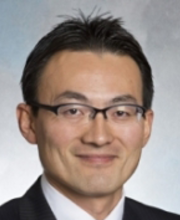Supine Breast MRI for Preoperative Surgical Planning and Intraoperative Margin Assessment During Breast-conserving Therapy for…
Tokuda, Hata Awarded $2.5m Nci Grant for Robotics Research to Improve Prostate Cancer Biopsy and Treatment


Junichi Tokuda, PhD, and Nobuhiko Hata, PhD, both of the National Center for Image-Guided Therapy (NCIGT) in the Department of Radiology, were awarded a four-year, $2.47 million R01 grant from the National Cancer Institute (NCI) for their team’s medical robotics research project titled “Adaptive Percutaneous Prostate Interventions using Sensorized Needle.”
This is a renewal of a three-year, $1.7 million R01 grant awarded in 2019 to the same team, which also includes with Iulian Iordachita, PhD, of Johns Hopkins University.
The project aims to develop a robotic-assisted system for minimally invasive prostate interventions, such as biopsy and focal treatment of prostate cancer. This system will utilize a novel, shape-sensing needle and needle-guiding manipulator to accurately insert a needle into lesions identified by MRI. The goal is to improve the accuracy of cancer diagnosis and the outcomes of focal treatment.
This work builds on a decade-long partnership — established by Clare Tempany, MD, director of NCIGT — between the Brigham, Johns Hopkins and Worcester Polytechnic Institute. This partnership leverages NCIGT’s clinical and engineering expertise in image-guided therapy and the other two institutions’ expertise in robotics and sensing to advance the field of image-guided medical robotics. Since 2006, this partnership has secured seven new and renewal R01 grants, with a total budget of more than $22.5 million collectively from NCI and the National Institute of Biomedical Imaging and Bioengineering, leading to several successful clinical trials.
More broadly in his work at the Brigham, Tokuda specializes in surgical navigation software, MRI-compatible robots and integration of these technologies for clinical applications.
Hata specializes in medical image computing and medical device development and has been affiliated with the Brigham’s Advanced Technologies Image Guided Therapy Program since 1995.
The NCI is the federal government’s principal agency for cancer research and training, and the largest funder of cancer research in the world. Its mission is to lead, conduct and support cancer research across the nation to advance scientific knowledge and help people live longer, healthier lives.